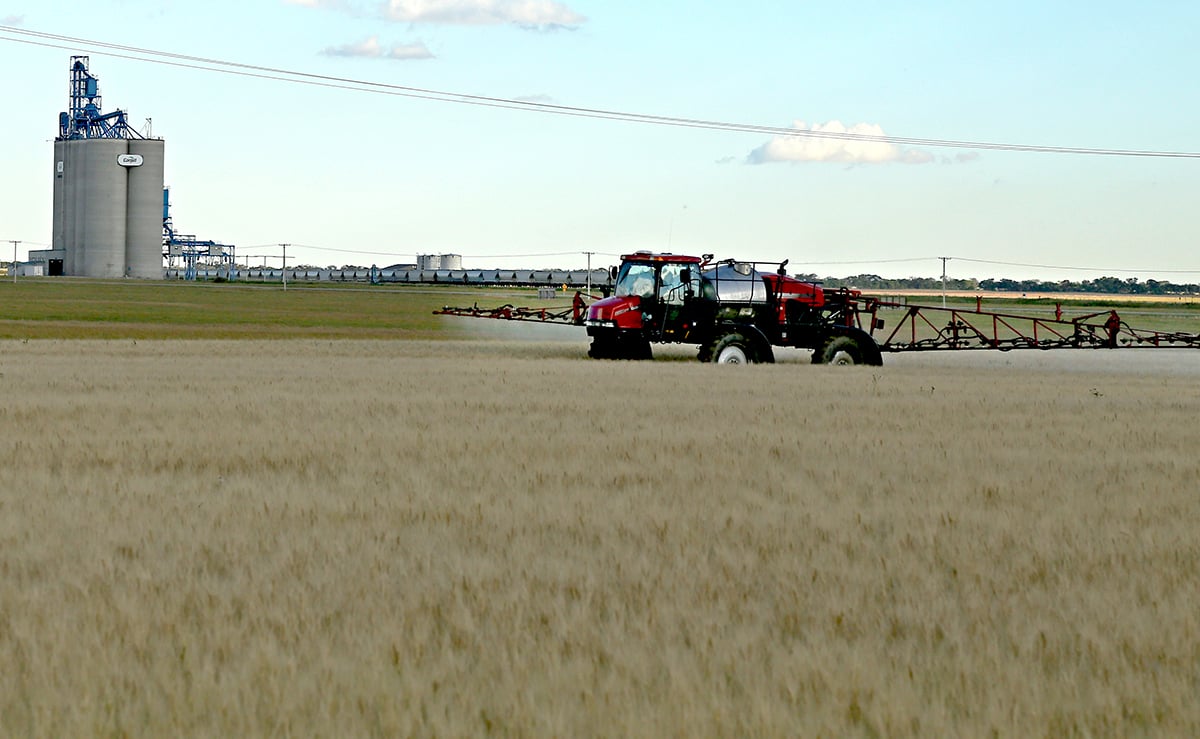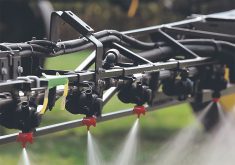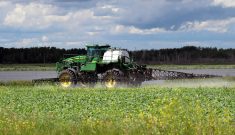REGINA — Industry representatives urged government agencies to do more to reduce red tape and reform regulations as the House of Commons standing agriculture committee’s study on that topic got underway late last month.
Some called for the use of drones for pesticide application to be approved more quickly, while others said Canada simply has to be quicker and more efficient at everything.
Officials from the department of agriculture, the Canadian Food Inspection Agency and the Pest Management Regulatory Agency said streamlining would continue as the red tape reduction agenda moved forward and highlighted progress already made.
Read Also

Farmers asked to keep an eye out for space junk
Farmers and landowners east of Saskatoon are asked to watch for possible debris in their fields after the re-entry of a satellite in late September.
However, Frederic Bissonnette, senior director general of operations at PMRA, said the agency is not meeting its performance targets in terms of timeliness.
Catherine Lessard from the Quebec Produce Growers Association said it takes 10 years for some approvals, and emergency registrations aren’t considered as emergencies.
“Right now we are not meeting the 90 percent… I think we’re around 79 percent,” Bissonnette told the committee.
And he expects things won’t improve until next year.
Matt Jones, assistant deputy minister for PMRA, said the agency is challenged by volume.
“When the act was drafted and said we needed to do reviews, reevaluations, every 15 years, there were hundreds of products,” he said.
“There are now between 7,000 and 8,000 products.”
Lessard said outdated legislation doesn’t take into account the rapid changes in agriculture. She said the government wants farmers to use less pesticide, but is still studying drones, which would allow for more precise application, when other countries have moved ahead.
Bissonnette said drones don’t behave like airplanes, so a product labelled safe for aerial application doesn’t mean it could be used in a drone. He said Canada has been working with the Organization for Economic Co-operation and Development for almost two years on this topic and looking at data generated by the industry to find out where the spray drops go.
There are also questions about how often drones need to be filled and whether that creates greater exposure risk to the operator.
“We do believe that the technology will actually help. I am pushing everybody to move this as quickly as we can,” he said.
Bissonnette also said there can be long delays for some product certifications because of the order in which that has to occur. There is a backlog right now, and delays of one to two years are happening, depending on consultation periods.
Fruit and Vegetable Growers of Canada asked PMRA to develop regulatory pathways for drone technology with the United States and other regulatory partners. Chris Duyvelshoff, chair of the crop protection advisory group, urged PMRA and CFIA to make decisions using a food lens because neither crops nor pests wait for decisions.
“Farmers need predictable science-based approvals. Farms already meet strict Canada GAP food safety audits yet face repeated checks for the same approvals,” he said.
Canadian Cattle Association executive vice-president Dennis Laycraft said the CFIA requires either a culture shift or a structural change to better serve that sector. He said the U.S. Department of Agriculture’s Agricultural Marketing Service gets approvals done in months rather than years.
He said restructuring isn’t just changing names but changing expertise. Since 2017, Canada has been working to get third-party verifiers for the European Union market and is still working on the first two. Meanwhile, the U.S. approved the first within six months, in 2010, and now has 52.
“AMS handles it,” he said.
“That’s what we’re talking about. Keep the meat inspectors, those in charge of healthy food, that’s a different expertise.”
Laycraft said the industry asked in 2007 if electronic certification could be put in place. The department committed to 2011 and then in 2011 said 2016.
“We actually had our first pilot project in 2019 … waiting 12 years to get what was obviously something that would improve the integrity of the system,” he said.
He urged CFIA to look at which agencies are doing things more efficiently and why.
Meanwhile, Alberta Conservative MP John Barlow asked if emergency use of strychnine in Saskatchewan and Alberta had been granted. It was banned by PMRA in 2020.
“I don’t believe we have received an actual emergency registration (request),” Bissonnette said.
Hearings for this study continue.


















